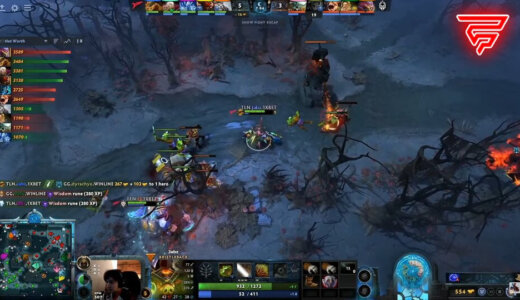Dota 2 is a complex game with thousands of possible outcomes depending on how well players understand and execute in-game mechanics. One of the most underestimated and misunderstood mechanic is vision— particularly those given by planting wards.
This article is a part of our Learn DOTA series that tackles how to improve your gameplay by understanding macro-skills, in-game knowledge, and mechanics. This one continues our theme of understanding map control. This time it’s about how to properly use wards.
The importance of warding
Vision is defined as a circular area around an allied unit that isn’t hidden by the fog of war, or the portion of the map that a player cannot see. Having vision is equivalent to having information on the movement and position of the enemy.
Observer Wards are important because they are pseudo-units that have a large vision AoE for an extended period without costing any gold. Successfully placing a ward in a highly contested area on the map means that you have the first move or reactionary advantage when engaging the enemies in these areas.
There are also special-case wards that can turn the tide of the game. For example, placing a ward directly beside the enemy high ground tower might be a waste of a good ward, but if your team is able to capitalize on the few seconds of vision on the enemy high ground, then it would be entirely worth it. There are also cheese wards such as sidelane cliff wards to catch those pesky Tinkers hiding in the trees.
In our previous article on map control, we discussed how securing important sections of the map can snowball to other advantages. Warding is a two-pronged solution to either claiming or consolidating that advantage.
How to Use Wards

Zeus’s vision is obstructed by the fog of war caused by trees, cliffs, and being on the low ground.
Contrary to popular belief, wards shouldn’t always be placed in marked warding spots on cliffs. This is because while they cover a large area, these spots are prone to getting dewarded. What you should keep in mind whenever you are placing down a ward is whether this is aligned to an objective your team is trying to take.
For example, if you want to secure a high ground push, you would want to close the door on a possible backline rotation play, so you place a ward on the path behind your team’s push.
Here are a few objectives that you can take into consideration when you are warding.
- Your team is looking to kill Roshan and take the Aegis
- A highground push
- Securing your Ancient camp triangle
Dewarding
The obvious counterplay to vision is either having similar vision or destroying enemy vision. Observer wards are magic-immune invisible units, and thus can only be destroyed with True Sight. Sentry wards are the most accessible forms of true sight.
Sentry wards do not provide real vision through the fog war, but they do give true sight around a considerable AoE which you can combine with your heroes’ vision to spot enemy wards.

Observer and Sentry Wards. Successfully destroying an enemy observer ward gives whoever provided the true sight a bounty. (100+4/min gold).
Defensive vs. Offensive Warding
There are no “good ward spots” because, as we mentioned, a good ward is something that helps your team get an objective, whether it is delaying the game or catching enemy heroes. There is no cookie-cutter list of ward spots that are consistently good.
In the same way, defensive and offensive warding isn’t dictated by whether a ward is placed on your side of the map or the enemy’s— it actually depends on how your team intends to use it.

These deep Radiant wards could look offensive, but they may be used as defense from a wraparound play by the enemy.
In summary, when your team is asking you to deward defensively, it may mean placing wards along the enemy’s possible routes of entry to an area you are trying to defend. Remember, a ward that isn’t revealing enemy heroes is just as informative as those that do.
Conclusion
Wards and the vision they provide are one of the best tools to gain map control. Try to align the usage of these free resources with the objectives your team is trying to achieve. Capitalize on observer wards by playing around areas with your team. This minimizes the chances of getting caught, or conversely, you may set your team for success by planning ganks in these areas.







